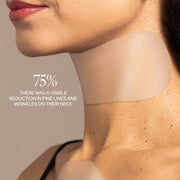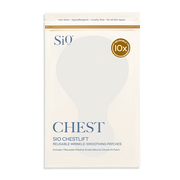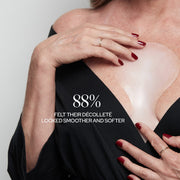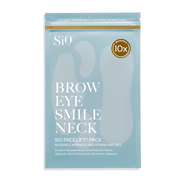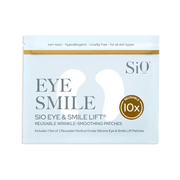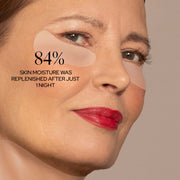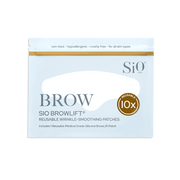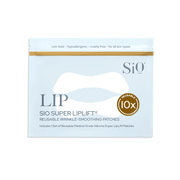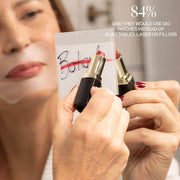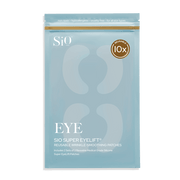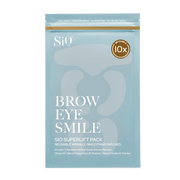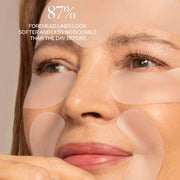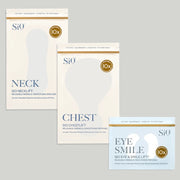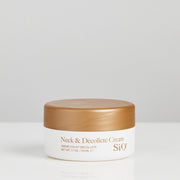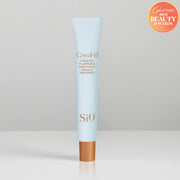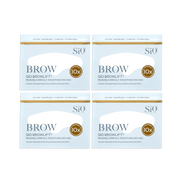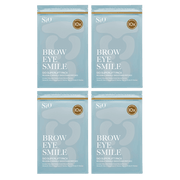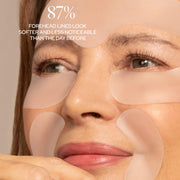Dry Flaky Skin on Your Face? Main Causes and How to Fix It

Did you know that under ordinary circumstances the body sheds an average of 200,000,000 skin cells every hour of the day? Now, imagine how bad it can get when your skin is visibly flaking. (We’d rather not.) Sandpaper skin happens to everyone at some point or another. Frustrating but usually harmless, it occurs when the skin barrier is disrupted and in turn expels moisture.
See, the skin barrier is made of a mixture of sebum (natural oils) and dead skin cells, which normally protect the lower layers and keep everything smooth and supple on top. But when the balance within that outer layer is thrown off, it manifests in a multitude of ways: redness, dullness, scaling, itching, fine lines, roughness, and tightness, to name a few. And this dilemma can be triggered by a wide range of factors.
What Causes Dry, Flaky, or Peeling Skin on the Face?
When the skin suddenly turns rough and ashy, it’s usually a sign of changes in your routine, weather, or environment. It can, however, indicate a serious medical condition, so it’s always worth a just-in-case trip to the dermatologist, should you find that your dry skin is getting in the way of normal life (a bit more on that to come).
That being said, here are the most common causes of dry, flaky skin on the face:
- Low humidity, whether from a dry climate or from using heat or air conditioning.
- Harsh soaps, or simply overwashing can rob the skin of its protective oils and result in an unbalanced pH.
- Water. Counterintuitive, yes, but that tight sensation you might feel after drying off happens because long, hot showers can pull moisture from the skin—as can bathing in chlorinated, salt, or hard water of any temperature.
- Skin allergies, which can be triggered by dyes, perfumes, and other chemicals in our skin products or even laundry detergent—and can appear as red, scaly, or itchy skin.
- Genetics, which can be responsible for dictating our pH, natural moisture levels, and our sensitivity to environmental changes.
- Aging, because over time our skin produces less and less oil on its own.
- Sun exposure, which at best causes the skin to lose moisture, and at worst, causes peeling, painful sunburns.
- Smoking, which contributes to dryness associated with premature aging and deprives the skin of oxygen and nutrients it needs to stay plump and happy.
- Anti-aging skincare, especially anything that speeds up cell turnover, like retinoid products.
- Skin conditions, including chronic issues like psoriasis and eczema, and acute infections—all of which should be treated by a dermatologist.
- Medical conditions, like diabetes, hypothyroidism, and malnutrition, which can have a secondary effect of skin irritation and dryness.
- Medications, including some prescribed for allergies, high blood pressure, high cholesterol, and even acne, often count dry, peeling skin as a side effect.
How to Get Rid of Dry Flaky Skin on Your Face
Just because you’re going through a "rough patch", it doesn’t mean you’re stuck in it forever. Here are our top tips for giving that day-to-day crispy skin the boot:
Hydrate, Then Moisturize
Moisturize?? Obvious, we know, but hear us out. Most moisturizers are meant to be occlusive, meaning they seal in hydration that already exists within the layers of the skin. To get the full benefits of a moisturizer, you have to use it on hydrated skin. That means slathering it on when you first get out of the shower—or after applying a serum containing humectants like hyaluronic acid, which can draw out and keep that H2O in place. Then, you’ll want to lock it in with a moisturizer containing skin-loving oils like jojoba and avocado. It wouldn’t hurt to seek hydrating ingredients in those moisturizers, too, for a two-in-one deal. Moisturizers containing hyaluronic acid, glycerin, aloe, and honey along with more emollient ingredients can hydrate and hold in the moisture in one fell swoop.
Use a Mild Cleanser
Please, we beg of you—whatever you do—do not use body soap on your face. Okay, now that that’s out of the way, let’s talk about facial cleansers because quite a few duds lurk even on the most premium of skincare shelves. You may believe that the only way you feel clean is with a sudsy, foamy cleansing session—but usually, foam and bubbles indicate the presence of surfactants, like sulfates, which are notoriously drying. A good cleanser eliminates dirt and makeup but leaves some of the natural oils of your skin intact to prevent that tight, dry feeling when you towel off.
Gently Exfoliate
Light, routine exfoliation is key in keeping scaly skin at bay. Skip the grainy scrubs and opt for a gentle alpha-hydroxy acid formula containing salicylic acid, glycolic acid, or lactic acid—but no more than once or twice a week. As an alternative, you can buff the skin mechanically using a soft washcloth or microfiber cloth and sweeping over the face in small circles, avoiding the eye area. This will slough off the dead skin cells and restore a smooth, even appearance. But remember, too much exfoliation can actually have the opposite effect, so tread lightly, and always follow up with a nourishing, fragrance-free moisturizer when you finish.
Crank Up the Humidifier
Using an air conditioner in the summer and heat in the winter can really take a toll on our skin because they suck all of the moisture out of the air, leaving us dull and depleted. If you can’t limit your use of a/c and heat, try using a humidifier. Even if you only turn it on at night while you sleep, it can do wonders for replenishing hydration and repairing dry, flaky skin.
Consult the Experts
If your dry skin is persisting a little too long, or it’s started to affect your sleep cycle or your lifestyle, it might be time to visit the dermatologist. There’s a small possibility that excessively dry skin is indicative of a deeper issue like hypothyroidism—or even a fungal infection or skin condition that would require prescription medication. For example, for something like atopic dermatitis, also known as eczema, your doctor may prescribe a topical steroid like hydrocortisone.
Hydrating Silicone Patches
Once your skin has healed and is no longer flaking, start incorporating SiO patches into your routine to lock in the moisture and keep skin hydrated. SiO patches are hydration inducing and use your body's own natural hydration to keep the skin moisturized. This is especially helpful for dry, flaky skin under the eyes and in other spots prone to peeling and scaling, like around the mouth. The pads are made from 100% medical grade silicone that adheres to the skin to create a microclimate on the surface, pulling moisture from the lower layers and sending it to the top for a refined, supple complexion.
Bottom Line
Dry, flaky skin is, unfortunately, just part of being a human. But a solid skincare regimen that considers seasonal and lifestyle changes is paramount when it comes to maintaining a silky, hydrated complexion. Traveling a lot for work? Airplane air is some of the driest out there. Stressful week have you spending long nights in the tub? Hot water may be stripping your skin of moisture.
These are just a couple of factors in a complex equation for what causes dry skin. Sometimes, it’s as simple as getting older, which can have a dwindling effect on how much oil our skin produces naturally. But no matter the reason, a few shifts in your routine could have you back to your porcelain doll self in no time. Incorporate moisturizing cleansers, gentle exfoliation, SPF protection, and a silicone patch or two, and you’ll be well on your way.



